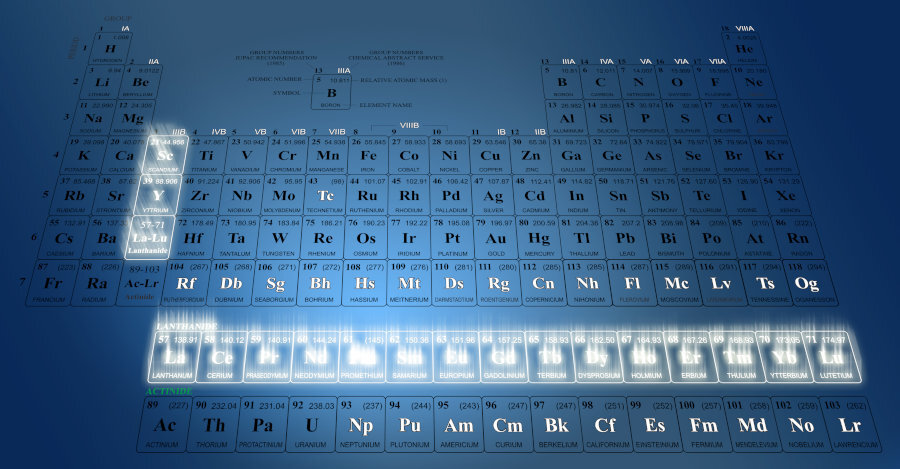Rare earth elements (REE) appear in the periodic table as a group of 15 minerals known as the Lanthanide series, plus two additional elements with similar magnetic qualities. They were first discovered in Sweden in 1787. The first rare earth element, yttrium, was isolated by Swedish chemist Johan Gadolin in 1794.
REE can be found all over the world, however the term ‘rare’ comes from the fact they usually occur in small quantities in the earth’s crust. Deposits do, however, exist in sufficient quantities to be commercially developed around the world.
Rare earths are divided into two groups depending on their atomic weight. These are light and heavy:
Light REE consist of six elements with atomic weights 57 to 62:
Lanthanum, Cerium, Praseodymium, Neodymium, Promethium and Samarium
Heavy REE consist of nine elements with atomic weights 63 to 71, plus 21 and 39
Europium, Gadolinium, Terbium, Dysprosium, Holmium, Erbium, Thulium, Ytterbium and Lutetium. In addition, Scandium and Yttrium are also included in this group.

Heavy REE are rarer and more complicated to process than Light REE and, as such, are more valuable. Due to their properties, REE are increasingly considered as critical minerals by governments around the world which are important for their national security. Other critical minerals include lithium copper, cobalt, nickel and tungsten.
China has large deposits of REE and currently processes about 90% of the global supply of REE, using ore mined within China and sourced from other countries.
Other countries with large deposits include Australia, Canada, Greenland, Mongolia, Brazil and Vietnam.
All 17 REE are used in many products. Among the most important are:
- Neodymium and praseodymium are primarily used in high-power magnets which are found in electric vehicles, wind turbines and popular consumer products.
- Dysprosium and terbium is added to high-power magnets to allow them to operate at high-temperatures.
- Europium is used in currency security.
- Gadolinium is vital for important MRI imaging.
